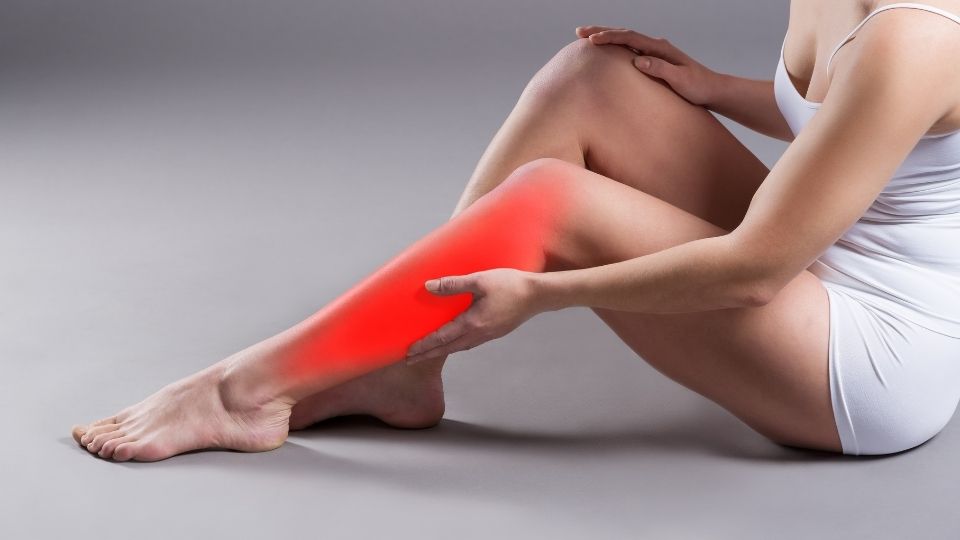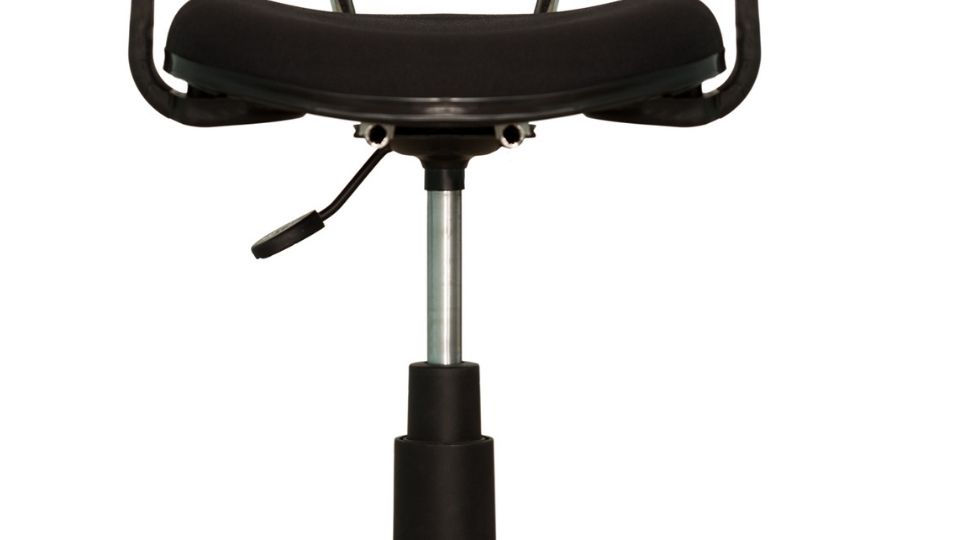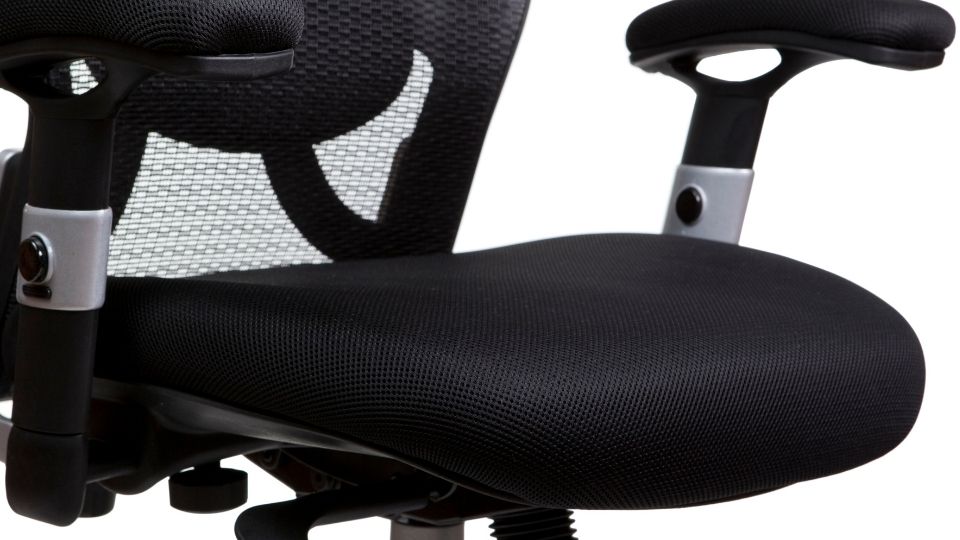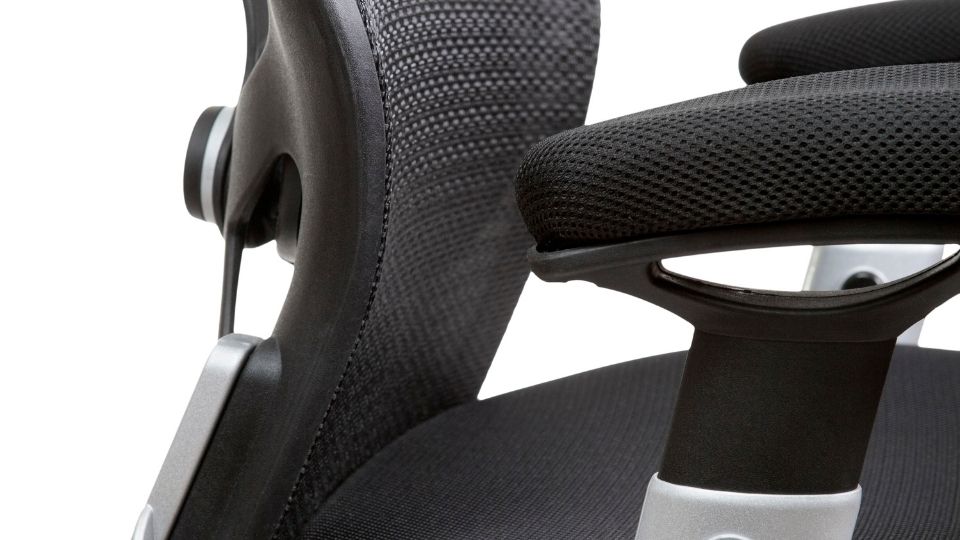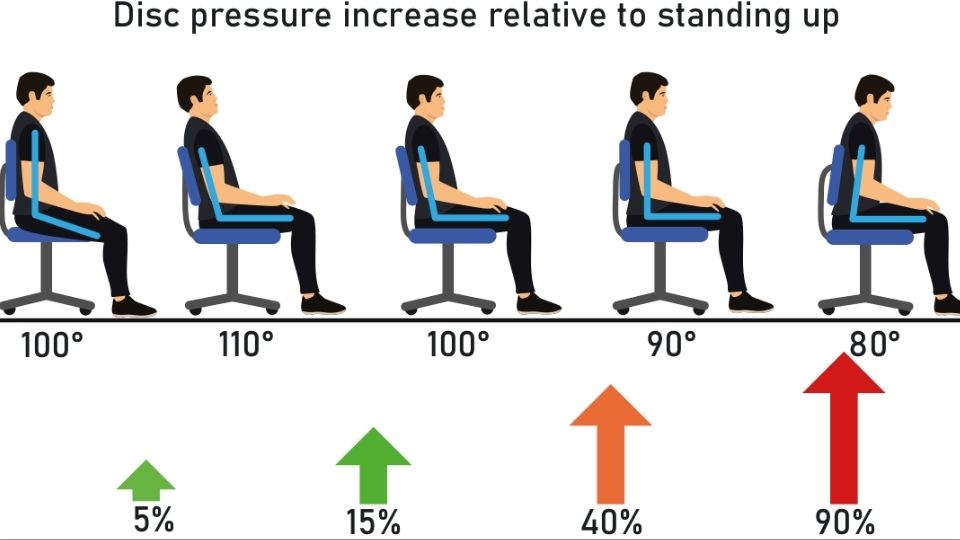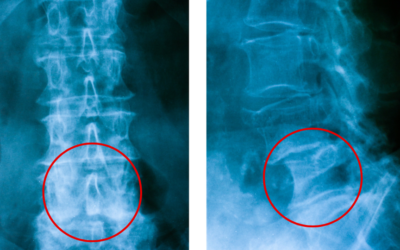Best Sitting Position for Restless Legs Syndrome
Over the last thirty years, I have been successfully treating patients suffering from restless leg syndrome. Not only do I have an invaluable perspective on the subject, but I have also been able to alleviate this frustrating condition.
As a general rule, those who suffer from restless leg syndrome most often have poor posture while seated. Never slouch while sitting. It is possible for leg pain to be caused by a herniated disc, a ligamentous sprain, or a muscle strain. Medical conditions may also contribute to this.
All Day Comfort & Support
Best Position Restless Legs When SittingAxial Ergonomic Seat Cushion® | Seat Chair Wedge
Quick Guide: A 30-Second Summary
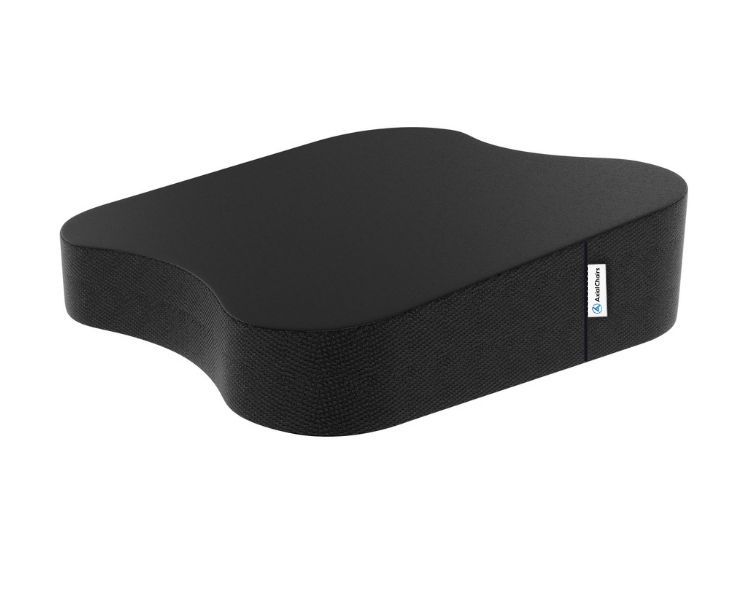
All Day Comfort & Support
Product Name
Axial Designs™ Seat Cushion
Price
$149
Warranty
1 Year
Type
Posture Wedge
Top Layer
100% Natural Latex (Molded)
Bottom Layer
High-Density Foam
Top Material
Isometric Grippy Vegan Leather
Bottom Material
Non-Slip Material
Side Material
3D Breathable Fabric
When my clients couldn’t even sit at their desks, I helped them find relief! Using this series of simple and short sitting positions and movement ideas, you should find a position that is more beneficial for you while also keeping track of how your body is positioned.
I hope these tips from my past experience will help relieve some pain for those who suffer through long days on their feet or with chronic leg pain issues. Here is a Youtube video that I made on Restless Leg Syndrome that already has 100K views!
What is Restless Legs Syndrome?
Restless Legs Syndrome is a disorder that causes an irresistible urge to move the legs, usually accompanied by uncomfortable sensations. It often occurs at night and can interrupt sleep, leading to daytime exhaustion.
At its core, restless legs syndrome (RLS) is a neurological disorder. It disrupts the body’s natural ability to regulate movement and rest by interfering with the communication between the brain and the spinal cord. This disruption can be caused by a variety of factors, including genetics, nutrient deficiencies, and lifestyle habits such as smoking and excessive alcohol intake.
While there is no cure for RLS, chiropractic care can relieve its symptoms. Spinal manipulation works to re-align the spine, which allows for improved nerve communication between the brain and body. Additionally, chiropractors may recommend core muscle engagement exercises targeting specific muscles to increase strength and stability. These exercises help reduce pain associated with RLS while also improving mobility and flexibility.
How to Manage Restless Legs Syndrome While Sitting
Your Chair: Getting It Right
When you’re sitting and working, it’s easy to forget how important your posture and comfort are. The way we sit can affect our health in many ways! For example, if the chair is too low or too high for us then back problems may arise from this position of bad alignment. Your seat pan should also be shaped properly with a slight angle so that you don’t end up slouching over into an unnatural position which ultimately could lead to neck pain as well as other ailments such as carpal tunnel syndrome (CTS).
It sounds like there are lot more work involved when choosing an office chair than one might think at first glance; luckily my tips will make sure that every time you find yourself seated during long hours of computer use.
4 Adjustments for Your Office Chair to Consider:
Adjustable Seat Height
It is essential that you elevate your seat height so it’s at its highest point. You’ll need to rest your feet securely on the floor when sitting down. This is one of the most important aspects of comfort is being able to regulate how high or low you are in a chair by adjusting its position accordingly.
Adjustable Seat Depth
As a general rule, the more surface area you sit on, the more comfortable you will be with restless legs syndrome. A seat depth adjustment is common on decent office chairs. This is a great resource! As you sit, you should be able to rest your back against the chair’s back with two or three fingers between your knees and its back.
Forward Tilt
The way you sit can greatly reduce back pain. Your hips should always be above your knees, and the weight is shifted from your spine to your core when sitting this way. It’s okay if there isn’t a chair that tilts forward – just buy an ergonomic wedge cushion! When both seat tilt and depth are adjusted on office chairs by my patients with restless legs syndrome, they find the most significant reduction in leg pain!
Lumbar Support
Support for the lumbar region is essential, and it should be comfortable. The best office chairs are designed with adjustable lumbar support, which can help to relieve pressure by improving your posture. Having the ability to adjust is crucial. Female cases with restless legs, for example, typically have a higher lumbar apex curve than males. When this feature is not available, a small towel or cushion must be used.
Consider Intermittent Standing
Standing is a great alternative to sitting, but you have to do it the right way! You can’t just stand there with your knees locked together or flopped over. Always make sure that when standing up straight you keep both legs unlocked and push down through all of the weight on your feet; don’t let any pressure build up in your lower back.
Standing with good posture and spreading your weight evenly across both feet should help you reduce strain on your lumbar spine over sitting.
With the growing prevalence of leg pain, standing desks are becoming increasingly popular. Perpetual standing cannot replace sitting, in my opinion. It is impossible for a chair to go out of style, and fashions change constantly.
Standing desks can be a great way to increase productivity, but you might want to take it easy and not work standing up for long periods of time because your neck and shoulders will start hurting.
If you are considering a standing desk, I recommend that you do: A standing desk is a great way to be energized and on your feet and may avoid legs syndrome susceptibility. Changing between sitting, walking, or even moving about is best. The truth is that we move every twenty minutes to avoid habitual postural positions from adopting. I typically advise my patients that the ideal posture is a moving posture!
These steps can help us avoid becoming comfortable in long periods of inactivity. This is commonly found in office jobs where people have been staring at their computer screens (especially with restless legs syndrome) all day long instead of taking a break to walk around in the fresh air.
Incorporate Movement into Your Work Schedule
I bet your legs are sore and stiff all the time while you’re sitting in front of a computer for hours on end! Your body is just trying to tell you that it would be better if we got out of our chairs from time to time.
The best thing you can do to handle this is get up and move around as often as possible. Movement for restless legs syndrome has many benefits, not only for your body but also for your mind!
Getting moving is important, but it does not have to involve travelling. Moving your body even a little bit from time to time can make you feel better! As you sit comfortably on the couch or in an office chair (or wherever). You could learn more about the different positions that we sit in – that way, no matter what position you’re in, your leg(s) shouldn’t feel uncomfortable anymore.
When you’ve been sitting still for more than 10 minutes, your muscles can get stiff. That’s because they’re confined to a small space and don’t get the chance to move around very much! So if you start feeling really uncomfortable after being seated or standing too long then try moving every once in a while – maybe walk outside with friends during lunch breaks or stretch while at work.
How to Prevent Leg Pain While Sitting | Best Sitting Position for Legs Syndrome
When you’re working on your computer, make sure to sit up and use a backrest to help keep the leg pain away. Your feet should be planted firmly onto the ground for maximum support! For the next few weeks or so at work (or however long it takes) practice these two things: having good posture (as mentioned above in my 4 steps) and keeping those lower-back muscles strong by utilizing proper seating practices with both feet planted securely on the floor; which will also lead to healthy spine alignment when seated properly while typing/mousing over time!
Steps to Prevent Leg Pain Sitting:
- Ensure that your hips are higher than your knees when you sit as seen in the diagram below:
- Never lock your knees while standing (ever).
- There is more to leg pain than meets the eye. Excessive sitting or poor posture causes your back to swell from excessive pressure placed on leg muscles and joints.
Why Leg Pain Syndrome Gets Worse When Sitting
Sitting incorrectly causes leg pain! In the long run, your bad posture could aggravate your pain further if you continue to work on your computer screens the entire day. Make use of an ergonomic chair with lumbar support or stand up at the office for a bit instead of sitting down- that might help your muscles relax until they heal from their damage over time!

How Your Chair Can Cause Leg Circulation Problems
Inflammation can also lead to leg pain due to an injured muscle or joint, which in turn is compounded by discomfort and pain. Sitting with leg pain usually means you have bad posture, and that needs to be corrected in order to eliminate it. In addition, a chiropractor or physical therapist can also assist and provide solutions for leg pain.
Diagnosing Restless Legs Syndrome
Restless legs syndrome (RLS) is challenging for most healthcare providers, but a chiropractor can help alleviate the sleep disruptions and other symptoms associated with RLS. A regular regimen of chiropractic care can be very beneficial in restoring spinal alignment and proper functioning of the nervous system. Chiropractors use many techniques to improve spinal alignment, such as manual manipulation, mobilization, or adjustments, which can help reduce nerve irritation and provide relief from RLS symptoms, including leg cramps and insomnia.
In addition to addressing spinal alignment, chiropractors also focus on core muscle engagement as a way to ease the discomfort and imbalance caused by RLS. Strengthening the core muscles helps stabilize the spine, which can alleviate tension and reduce the impact of symptoms like leg cramps and sleep disruptions. This can be achieved through therapeutic exercises, stretches, and postural awareness techniques, all of which can improve RLS symptoms and help patients achieve a better night’s sleep.
If you suffer from restless legs syndrome (RLS) and are struggling with sleep disruptions and other symptoms, seeking out the care of a chiropractor can be a valuable step towards relief. By addressing spinal alignment and core muscle engagement, chiropractic care can help reduce the impact of RLS on your daily life, making it easier to manage symptoms and get the sleep you need to feel your best. With the right care and support, you can manage RLS effectively and find relief from its symptoms.
Black Friday: 35% Off Today
Typical Delivery 1-3 Days
Periodic Limb Movement Disorder Syndrome
Restless legs syndrome (RLS) and sleep symptoms often occur together, and chiropractic care can be helpful in treating both conditions. Chiropractors use a variety of treatments to help improve mobility and reduce discomfort associated with PLMD.
Chiropractic care for RLS and PLMD is not only safe but also effective. Regular spinal alignment and core muscle engagement can provide long-term relief from the symptoms associated with these disorders. With proper diagnosis and treatment, you can get back on track to living your best life.
If you are struggling with restless legs syndrome or sleep symptoms, reach out to your local chiropractor today to discuss a treatment plan tailored just for you! Together we can work towards restoring balance in your body and improving your quality of life.
Treating Restless Legs Syndrome
Restless legs syndrome (RLS) is not always an easy task to treat, but with the help of a chiropractor, relief can be achieved. Spinal alignment and core muscle engagement are key components of treating RLS and its associated symptoms, including sleep disruption. Through regular adjustments, therapeutic exercises, stretches, and postural awareness techniques, chiropractors can help restore balance in your body while providing long-term relief from the discomfort associated with these disorders.
Restless Legs Syndrome (RLS) is a primary restless legs condition that causes an uncontrollable urge to move the legs, often accompanied by uncomfortable sensations that can disrupt sleep. RLS affects around 25% of the population and can greatly affect the quality of life for those who develop it. The symptoms of RLS can range from mild to severe, and treating restless legs and its associated sleep disturbance can be difficult due to the varying degrees of limb movement disorder.
Diagnosing restless legs syndrome is often done through clinical observation of symptoms and periodic limb movement during sleep. According to the National Institute of Neurological Disorders and Stroke (NINDS), finding the best sitting position is one of the effective methods for treating restless legs, which can reduce the symptoms and improve sleep. Labeling the sitting positions that exacerbate restless leg syndrome as “no-no” positions can be helpful in guiding individuals to find the best sitting position for RLS and improving the quality of sleep.
A recent study published on PubMed, a database maintained by the National Library of Medicine (NLM), found that certain sitting positions can reduce the discomfort associated with RLS and improve sleep. The Cleveland Clinic recommends that those with restless legs syndrome should avoid sitting in positions that put pressure on the back of the legs, such as sitting on a hard surface or crossing the legs. Instead, sitting with the legs slightly elevated and uncrossed can help reduce the symptoms of RLS and promote better sleep.
Restless legs syndrome (RLS) is a condition that affects many people worldwide and can disrupt sleep. It can develop at any point in life and can be mild or severe, with secondary RLS occurring due to certain conditions such as iron deficiency or kidney disease. When treating RLS, finding the best sitting position is crucial for managing symptoms and improving sleep quality. According to Pubmed, the best sitting position for RLS is one that promotes good posture and reduces pressure on the legs, which can alleviate symptoms and improve sleep. Avoiding “no-no” sitting positions and consulting with a doctor can also provide support and guidance for managing restless legs syndrome and its associated sleep disturbance.
All Day Comfort & Support
Overview of Restless Legs Syndrome (RLS) and Its Characteristics, Treatment, and Management
Restless Legs Syndrome (RLS) is a condition that affects a significant number of people, and there is ongoing research on its etiology, diagnosis, and treatment. According to a review article available on PubMed, NCBI, and NLM, RLS is a primary neurological disorder or secondary restless legs condition that can develop at any stage of life, and it affects both genders. RLS is characterized by an unpleasant sensation in the legs that triggers an irresistible urge to move them. There are several medications and drugs available for treating the condition, but non-drug interventions such as changing one’s sitting position can also be helpful. Mayo Clinic recommends avoiding certain foods and devices, as they may worsen the symptoms of RLS, and consulting with a doctor and family for information and support. Additionally, dopamine is a key neurotransmitter that plays a significant role in the susceptibility and treatment of RLS, and periodic limb movements during sleep (PLMS) are often associated with RLS.
Takeaway
Although the causes of restless leg syndrome of how you may develop restless legs are not yet known, it is clear that improper posture while seated can exacerbate symptoms. If the legs syndrome is mild, simple posture changes may do the trick! The most important thing to remember in the treatment of restless legs is to make sure you have proper ergonomic seating at home and in your office chair. Look for the label with proper references like: ncbi nlm NIH; pubmed ncbi nlm; or nlm nih gov.
Restless Legs Syndrome (RLS) is a neurological disorder that affects many people worldwide. It is characterized by an overwhelming urge to move the legs, often accompanied by uncomfortable sensations such as tingling, crawling, or aching. Treating RLS can be challenging, especially if the condition is severe, but there are several ways to manage it. Mild cases of RLS can be treated by making lifestyle changes such as regular exercise, avoiding caffeine, and maintaining a healthy sleep schedule. In more severe cases, medication may be necessary to alleviate symptoms. There are also other conditions that can cause restless legs, such as iron deficiency or peripheral neuropathy, so it is important to get a proper diagnosis to ensure the most effective treatment. Living with restless legs can be difficult, but with the right treatment and management strategies, it is possible to lead a normal and fulfilling life.
For the most useful guidance on how to set up an ergonomic workstation, visit my blog today!
References:
- Allen, R.P., Picchietti, D., Hening, W.A., Trenkwalder, C., Walters, A.S. and Montplaisi, J., 2003. Restless legs syndrome: diagnostic criteria, special considerations, and epidemiology: a report from the restless legs syndrome diagnosis and epidemiology workshop at the National Institutes of Health. Sleep medicine, 4(2), pp.101-119.
- Katz, J.N. and Simmons, B.P., 2002. Carpal tunnel syndrome. New England Journal of Medicine, 346(23), pp.1807-1812.
- Harrison, S.A., Stynes, S., Dunn, K.M., Foster, N.E. and Konstantinou, K., 2017. Neuropathic pain in low Back-Related leg pain patients: what is the evidence of prevalence, characteristics, and prognosis in primary care? A systematic review of the literature. The Journal of Pain, 18(11), pp.1295-1312.


